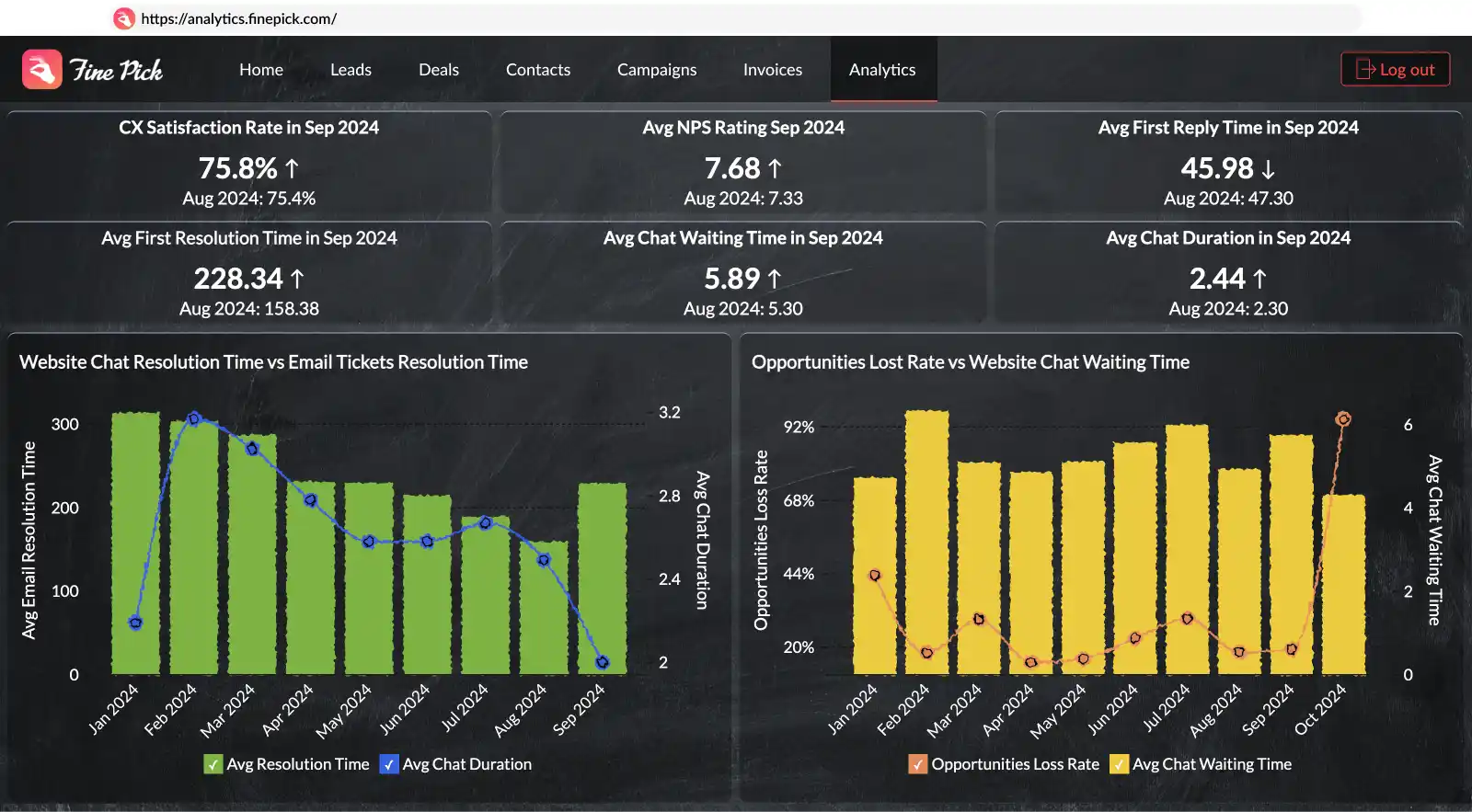Introduction to Embedded Reporting
In the sections below, we’ll explore the usage of embedded reporting, benefits accrued to business, best practices for implementation, and the key criteria to keep in mind while looking for the right embedded reporting tool.
Why is Embedded BI Important
Traditional BI tools often require users to gather the analyzed insights separately. However, Embedded BI circumvents this gap by making actionable insights available within the right context of the workflows. This allows users to make timely decisions that have become increasingly essential in today's competitive business landscape.

How is Embedded Reporting used in Businesses?
The usage of embedded BI for reporting is so widespread and common for delivering real-time business insights. Here are some key use cases:
Customer Relationship Management(CRM)
Sales teams can use embedded sales analytics to monitor sales performance, forecast revenue, and track key indicators, all within their own CRM platforms enhanced by embedded analytics for SaaS applications.
Finance & Accounting
Track key financial metrics, Perform real-time budget analysis, and do much more, directly within an accounting software.
Healthcare
Present patient reports, hospital performance metrics, and healthcare trends within the portals/applications accessible by healthcare professionals.
E-commerce & Retail
Retailers can do their sales analysis, track inventory, and monitor customer behaviour, using real-time insights within their business software.
Workforce Management
HR teams can track employee performance & engagement, handle payroll data without switching from their HRMS tools.
Best Practices of Embedded Reporting
User Experience(UX)
Embedded reports and dashboards should be seamlessly integrated within the application's interface to ensure that they enhance the smoothness of the overall user experience
White-labeling & Customization
Enable extensive white-labeling support and customization options for embedded data visualizations to maintain consistency with the host platform's branding.
Actionable Insights
Empower users to do their own ad-hoc self-service analytics through interactive options (like drill-downs and filters) to extract relevant, actionable insights in quick time.
Cross-platform compatibility
The embedded reports and dashboards should be optimized for both desktop and mobile devices for maximum usability and platform engagement.
Privacy & Security
Implement robust data protection mechanisms (like granular access control) to ensure the privacy and security of data, in accordance with the established industry standards and regulations.
Embedded Reporting Tool vs. Standalone Reporting Tool
| Embedded Reporting Tool | Standalone Reporting Tool |
|---|---|
| A reporting solution that is integrated within an existing application. | A separate, dedicated application or platform for creating and viewing reports and dashboards |
| Provides seamless, in-app experience without the need to toggle between platforms. | Requires users to switch to its application window to access reports |
| Requires initial setup effort (using APIs, SDKs, or iFrames) to embed into host apps. | Requires effort to pull data from external sources |
| Highly customizable UI to match the host application's brand guidelines | UI is largely fixed with less extensive support for styling or customization |
| Set-up in a way to make life easier for non-technical, business users | Some advanced capabilities would require a bit of training, for business users to get started with |
Embedded reporting tools
Choosing the right embedded reporting solution is essential for delivering seamless, interactive, and data-driven experiences within your application. Modern BI & analytics tools offer powerful capabilities tailored for embedded reporting like real-time dashboards and flexible integration options.
A best embedded reporting tool should effectively cater to a broad variety of use cases and also inherently leverage the best practices that we have discussed earlier.
How to Choose an Embedded Reporting Tool?
The criteria listed below aren't exhaustive but represent key factors to consider when evaluating a suitable tool for embedded reporting.
Performance & Scalability:
The embedded reporting tool should handle and process large volumes of data in real time while supporting a high number of concurrent users without affecting the overall platform's performance
Multi-source data connectivity:
To aggregate relevant data that's spread across multiple sources, the tool should provide or support data connectors with local/cloud databases, business applications, data lakes, files & feeds etc.
Self-service analytics
To gather actionable insights in real time, users should be able to leverage powerful, advanced analytics capabilities without technical assistance.
Developer Support
Comprehensive technical documentation, active community forums, and a responsive support team are essential to align the embedded reporting tool with the host platform at all levels.
Pricing & Licensing
Look for tools with high pricing transparency and flexible licensing options to help you choose a viable pricing model
Benefits of Embedded Reporting tools
From delivering customized, white-label reporting tool to ensuring secure, role-based data access, embedded reporting tools have transformed how organizations leverage data. Some of the key benefits include:
Seamless user experience
Embedded reporting tool eliminate the need for users to switch between different platforms by contextually integrating themselves seamlessly within the user's core business application.
Real-time data access
They connect with live data sources and continually do real-time synchronization to ensure the users have access to up-to-date data.
Increased user engagement
The interactive, in-app analytics capabilities offered by embedded reporting tools have proven to result in higher user engagement and better utilization of the platform/business application.
Competitive advantage
Embedding a reporting tool with advanced analytics capabilities can help improve the differentiation of the platform's offering.
Performance Optimization
The embedded reporting features can scale alongside your application usage while maintaining the optimal level of performance.
Zoho Analytics is a modern business intelligence platform with a proven track record for reliability and efficiency, especially for embedded reporting needs. Nothing vouches for our reputation better than the words of our long-term customers.

"We have embedded Zoho Analytics within our internally developed financial services software. Whenever I have a new client meeting, I demonstrate the Ask Zia feature of Zoho Analytics with a question like "what was my income last month?" It's quick reply or a visual fascinates my clients and they say, 'This is what we want'. It allows me to show them that we are a forward thinking company partnered with a global company like Zoho"
 Craig RoxbyManaging Director, Magnifi
Craig RoxbyManaging Director, Magnifi